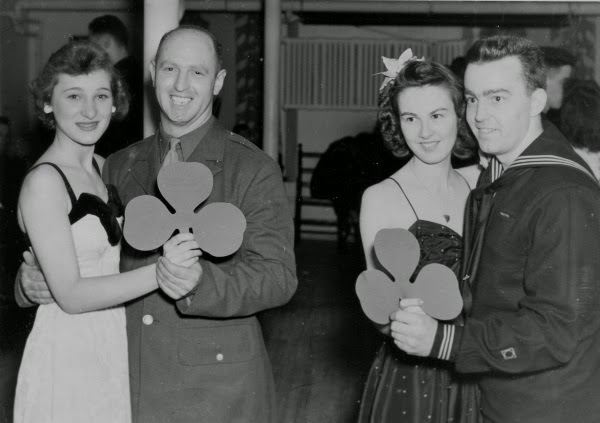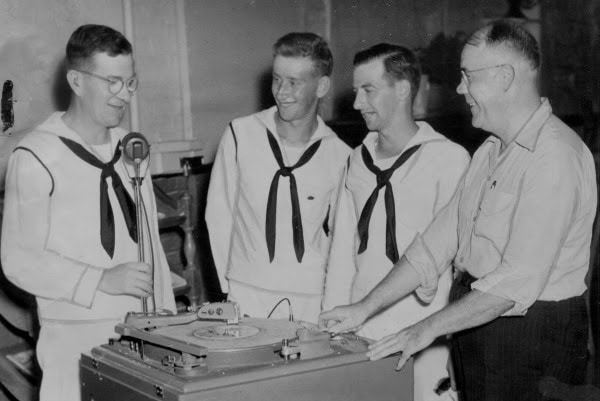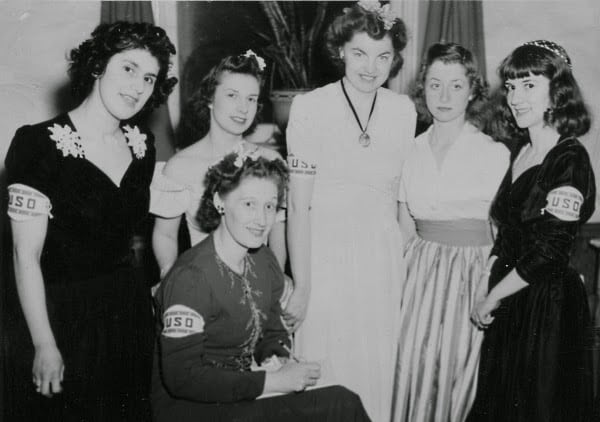The Geneva USO and WWII
By Anne Dealy, Director of Education and Public Information
The USO was originally designed to serve small American communities like Geneva that could not handle the influx of servicemen and defense workers that came with the building of large military bases and factories. In 1942 Geneva was already under strain from the construction of the Seneca Army Depot and Sampson Naval Training Station. The USO would be essential when the naval recruits or boots began arriving in October 1942. The Geneva USO council was formed in August, chaired by H.E. Hovey and made up of local representatives from the six service organizations, a rep from Sampson, and several community members.
In September 1942, the Federal Security Agency purchased 361 South Main Street, the former Methodist Church building, which had most recently been an auto showroom and garage, and began refurbishing it to be the USO canteen. In the meantime, the USO opened a temporary club at the Masonic Temple across the street. The club had a grill where service members could get a 10 cent hamburger or a sandwich at cost. Dances were held there, although the space was so small there was barely room to jitterbug. Local volunteers provided homemade cookies, cakes, and pies, and the temporary club was furnished with donations from local businesses and residents.
By the time the new USO building was dedicated on June 19, 1943, the Geneva club had already served 100,000 servicemen. The new building had even more to offer, with a snack bar, reading rooms, darkroom, record room and game rooms for tennis and checkers. Sailors could call home for free or just take a break from the base. In addition to a few paid USO staffers, Geneva volunteers did most of the work. Nearly every church, fraternal and social club, community service organization, and major employer contributed time and money to the Geneva USO and its activities. Committees were devoted to dusting, flower decorations, transportation, cookies, refreshments and hostessing. Volunteers drove the Sampson band to the USO for dances and gave hostesses rides home after them. Geneva’s barbers made a spaghetti supper for the sailors and other volunteers helped sailors record their voices on records to send home.
Artists Elizabeth Rose Carson, Norman Kent and Elizabeth Boswell volunteered to sketch servicemen at the USO. On July 25, 1944 Carson wrote in her diary, “I did 11 (or more) portrait sketches of young sailors at USO today. I worked steadily nearly 4 ½ hours & loved it.” She loved it so much she sometimes forgot to come home from the USO and had to be reminded by her family to return at dinnertime.
The hostesses were what everyone remembered about the USO. There were two kinds of hostess. Senior hostesses were usually women over 35 who took on the role of mother figure at the Club. These women were the chaperons for social activities; they baked, sewed and gave advice to servicemen. They also recommended younger women as junior hostesses. Junior hostesses were usually single, and acted as companions for visiting servicemen, playing games, talking and dancing with them. One trainer reminded junior hostesses that their duties “are the same as those of a hostess at home—to greet her guests, to circulate among them, to be concerned that all guests should have a good time…and to be a good conversationalist.” She warned them “that girls who go to the USO for men, music and fun only will not last six months, and do not belong in the USO.” Although dating between military personnel and hostesses was discouraged, it did occur, and more than one hostess married a man she met at the USO. Most women, however, felt hostessing was a way to contribute to the war effort and do their part, while having a good time. Hostesses often had husbands, sons or brothers in the service and really wanted to provide a home away from home for men like the ones they knew and loved.
The USO, perhaps more than other efforts during the war years, was a true community labor in Geneva. Much of the organization’s work was done by women. It enabled women who weren’t willing or able to work in war industries to contribute to the war effort, using traditional female skills that had been valued before the war. The USO served sailors and soldiers in the community until 1946, when Sampson Naval base was closed. The USO building was purchased by the city and became a community Civic Center in the late 1940s. Today the building still stands and currently houses the offices of Legal Assistance of Western New York.
and Interview with Meghan K. Winchell.History of the USOHistory and structure of the USO








A minor correction: the 6th picture down on this page lists the names of the six young USO volunteers with Jane Boughtin to the far right. Mom’s name was June, not Jane, but thank you for a picture I was unaware of previously. June Boughtin Fisher died April 30 , 2011 aged 89.
Thank you for the correction. I will pass it along to our archivist. Since this image is from our Oakley collection, it is likely that the photojournalist P.B. Oakley got her name wrong as we usually get our identifications from the notes he wrote on the back of the images.
S the USO in geneva still open today